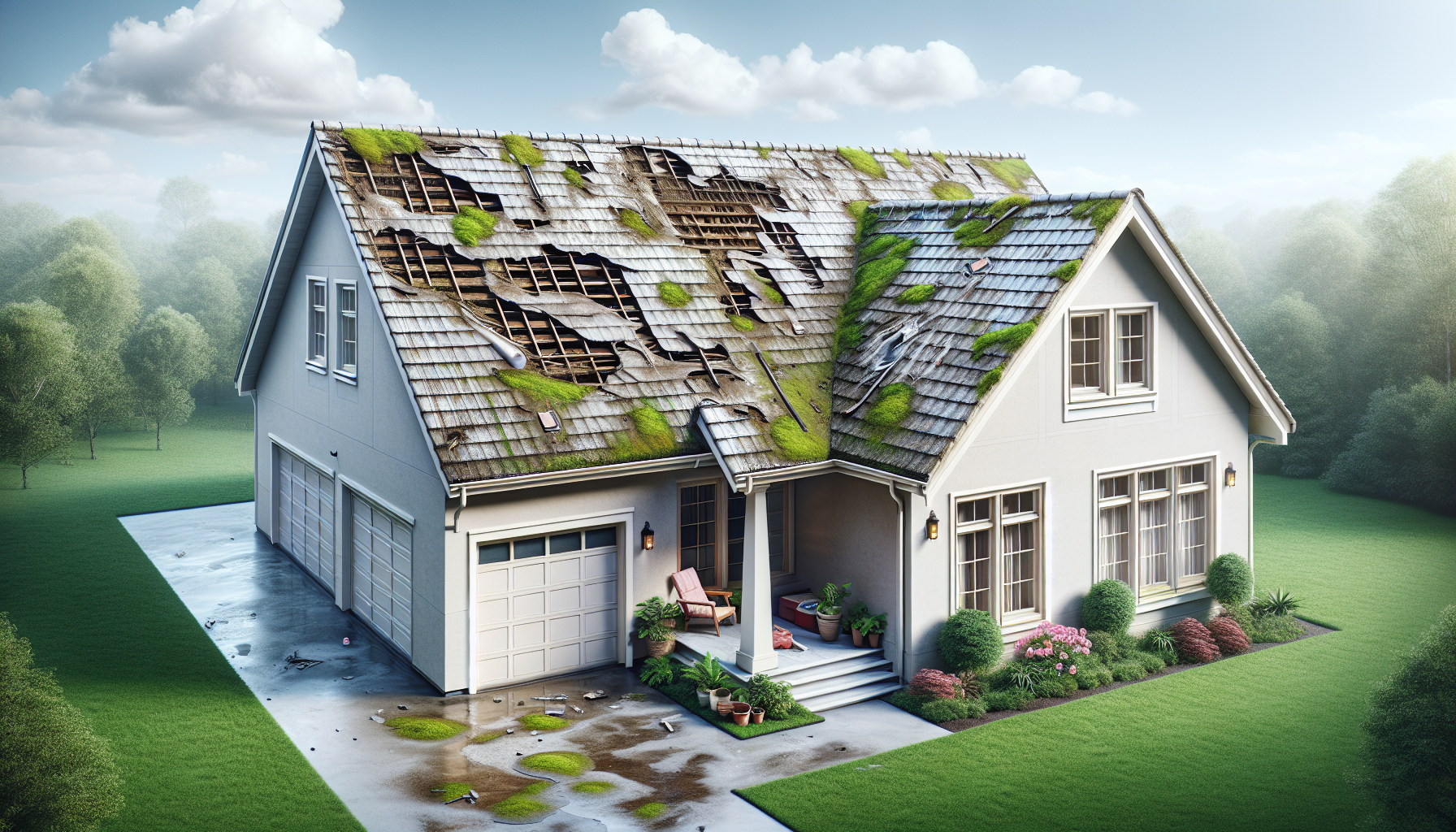A well-maintained roof is essential not only for the curb appeal of a home but more importantly, for the safety and security it provides to its inhabitants. However, knowing when to embark on a roof replacement project can be a complex decision. Factors such as the age of the roof, visible signs of deterioration, and the extent of damage contribute to determining the necessity for a new roof. This task, often undertaken with the assistance of a professional roof contractor, involves significant investment and planning, particularly in selecting the suitable roofing materials and understanding the flat roof replacement cost or the cost associated with replacing asphalt shingles.
This article aims to provide homeowners with a comprehensive guide on the key indicators that signal the time for roof replacement. It will cover the critical age indicators to look out for, the visual and structural signs of roof damage that necessitate immediate attention, and the importance of a thorough roof inspection by a certified roof contractor to accurately assess the condition of one’s roof. Additionally, the discussion will touch upon the practical considerations involved in the decision-making process, such as when to replace roof shingles, how often you need to replace a roof, and recognizing the signs a roof needs to be replaced – all of which are crucial to maintaining the integrity of one’s home and ensuring the well-being of those within.
Age Indicators for Roof Replacement
Typical Lifespans of Roofing Materials
Roofing materials vary widely in terms of durability and expected lifespan. Asphalt shingles, commonly used for their cost-effectiveness, typically last between 15 to 30 years. In contrast, metal roofs offer a much longer lifespan, extending up to 70 years due to their robust nature. For those looking for longevity, slate tiles are an excellent choice, with lifespans that can exceed 100 years. It’s important for homeowners to consider these factors when planning for roof replacement, as the material chosen can significantly impact the frequency and overall cost of roofing projects.
Impact of Installation Methods
The longevity of a roof is heavily influenced by the quality of its installation. Poor installation techniques, such as improper shingle alignment or inadequate sealing, can drastically reduce a roof’s lifespan. Homeowners should ensure that they hire experienced and reputable roof contractors who adhere to industry standards to avoid common installation errors that lead to premature roof failure. Regular inspections and maintenance by professionals can help identify and rectify minor issues before they escalate, further extending the life of the roof.
Signs of Aging
As roofs age, they exhibit clear signs that may indicate the need for inspection or replacement. Common indicators include curled or missing shingles, which result from exposure to environmental elements like wind and heat. Additionally, the presence of moss or dark streaks can signal trapped moisture and potential underlying damage. Homeowners should be vigilant and seek professional assessments when these signs appear to ensure the structural integrity of their roof and the safety of their home.
For more detailed assessments and expert roofing solutions, consider visiting Roof Revivers for professional guidance and service. If you’re noticing any of the signs mentioned, don’t hesitate to contact Roof Revivers for a comprehensive roof inspection and tailored solutions.
Visual Signs of Roof Damage
Shingles
Shingles are the first line of defense for a roof, but over time, they can exhibit signs of deterioration that are critical to notice. Homeowners may observe shingles that appear lifted, cracked, or peeling, indicating potential underlying damage. Granule loss is another common issue, where shingles begin shedding their protective layer, which can be evident from granules accumulating in gutters or around downspouts. Such damage not only compromises the roof’s aesthetic but also its functionality, making timely intervention essential.
Flashing
Flashing plays a pivotal role in protecting the roof’s most vulnerable areas, such as around chimneys, skylights, and roof valleys. Damage to flashing can manifest as rust, corrosion, or physical deformities like bending or lifting, often exacerbated by harsh weather conditions. Ineffective flashing can lead to water seeping into the roof structure, causing extensive damage if not addressed promptly. Regular inspections can help catch these issues early, preventing costly repairs.
Roof Valleys
Roof valleys are critical for channeling water off the roof, but they are prone to various issues that can impair their functionality. Accumulation of debris such as leaves and twigs can block water flow, leading to potential leaks and water damage. Signs of wear in valleys may include discolored or curling shingles and visible damage to the valley flashing. Ensuring that roof valleys are clear of debris and structurally sound is crucial for maintaining the overall health of the roof.
For a comprehensive assessment of your roof’s condition, including an evaluation of shingles, flashing, and roof valleys, consider visiting Roof Revivers. Should you notice any of the signs mentioned, do not hesitate to contact Roof Revivers for expert roofing solutions tailored to your needs.
Structural Indicators
Sagging
A sagging roof is a critical warning sign of potential structural failure. When sagging is observed, it often indicates that the roof’s framing may be compromised due to factors like prolonged moisture exposure, termite damage, or substandard construction practices. This weakening of structural elements can lead to a decreased ability to support the roof’s weight, necessitating immediate attention and likely replacement to prevent severe damage.
Daylight Through Roof Boards
The presence of daylight streaming through roof boards is a clear indicator of structural breaches in the roofing material. Such openings not only allow light but also water, which can cause further damage to the roof structure. Homeowners should consider this a serious issue; if light can penetrate, water can too, leading to increased risk of leaks and water damage. Immediate inspection and repair are crucial to maintain the integrity of the roof.
Water Damage and Mold
Water damage and mold are significant concerns that often accompany structural issues in a roof. Leaks can lead to mold growth within 24 hours, posing health risks and potentially leading to extensive repairs if not addressed swiftly. The presence of mold, which can appear in various colors and is accompanied by a musty odor, indicates an urgent need for roof inspection and possibly replacement. Additionally, water stains on ceilings or walls should prompt homeowners to seek professional assessment to determine the extent of damage and the appropriate remedial actions.
For expert guidance and solutions concerning these structural indicators, visiting Roof Revivers is advisable. If any of these signs are observed, contacting Roof Revivers for a comprehensive roof inspection and tailored solutions is recommended.
Professional Assessment
When to Call a Roofer
If homeowners observe any signs of damage such as missing, cracked, or curling shingles, or if there is noticeable sagging or uneven areas on the roof, it is crucial to contact a professional roofer for a thorough inspection. Significant damage from severe weather conditions, leaks, or structural issues like sagging should be addressed immediately by experienced roofing professionals to prevent further damage and ensure safety.
What to Expect from an Inspection
A professional roof inspection involves a detailed examination of the roof’s condition. During the inspection, experienced roofers will assess structural elements such as the decking and framing for signs of weakness, check for damage to shingles and flashing, and evaluate the interior of the attic for leaks, mold, or other signs of water damage. The inspector will provide a comprehensive report detailing the findings and recommend necessary repairs or replacement to maintain the roof’s integrity.
Getting Multiple Opinions
It is advisable for homeowners to obtain multiple estimates from different roofing contractors when considering significant repairs or a roof replacement. This allows homeowners to compare different perspectives, costs, and service quality, ensuring they make an informed decision that best suits their needs and budget. Reputable roofers, like those from Roof Revivers, often provide honest assessments and transparent pricing, helping homeowners avoid unnecessary expenses.
For detailed assessments and expert roofing solutions, homeowners are encouraged to visit Roof Revivers. If you’re experiencing any roofing issues, do not hesitate to contact Roof Revivers for a professional inspection and tailored roofing solutions.
Conclusion
Throughout this article, we’ve navigated the pivotal signs that signal the need for a roof replacement, emphasizing the role of professional assessments in determining the integrity and longevity of your roofing system. From understanding the impact of aging and environmental factors on different roofing materials to recognizing the immediate visual and structural indicators of damage, the importance of timely intervention has been consistently highlighted. This discussion serves not only as a guide for identifying roofing issues but also underscores the value of expert advice in ensuring the safety and durability of one’s home.
The decision to replace a roof is significant, involving considerations of cost, material, and the expertise of the professionals enlisted for the task. Always remember, a proactive approach towards roof maintenance and repair can prevent minor issues from escalating into major concerns, safeguarding your home against potential damage and costly repairs. For those noticing signs of wear or damage, or simply seeking peace of mind regarding their roof’s condition, Contact Roof Revivers for a FREE inspection. Entrusting your roofing needs to experienced professionals guarantees a comprehensive assessment and tailored solutions, ultimately ensuring the longevity and resilience of your roofing system.
FAQs
1. What are the indicators that a roof needs replacement?
Signs that you might need to replace your roof include water damage in the upper levels of your home, such as moisture marks, brown, yellow, or grey stains, and peeling paint on walls and ceilings. Additionally, checking the attic for damp rafters or leaks can further confirm roof damage.
2. When is it typically necessary to consider getting a new roof?
Roofs deteriorate over time due to weathering and exposure to the elements. If your roof is over 20 years old, it likely needs to be replaced. The presence of algae, moss, and mold, especially in shaded areas, can also indicate moisture damage and potential rot, signaling the need for a new roof.
3. What is the best time of year to replace a roof?
The optimal time for roof replacement is during the fall. This season is preferred because of the mild temperatures and the generally stable weather conditions, which are ideal for roofing work.
4. How long can different types of roofs be expected to last before needing replacement?
The lifespan of a roof depends on the materials used. Slate, copper, and tile roofs can last more than 50 years. Wood shake roofs typically last about 30 years, fiber cement shingles about 25 years, and asphalt shingle or composition roofs about 20 years, according to findings by the National Association of Home Builders (NAHB).



